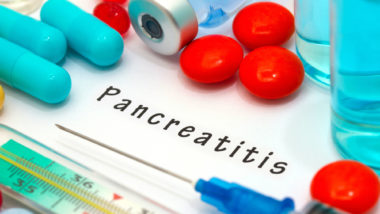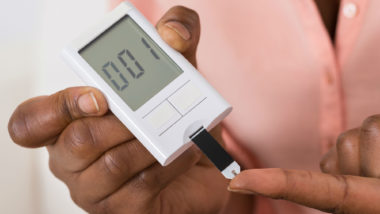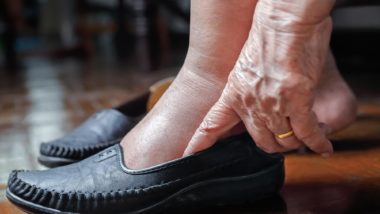Top Class Actions’s website and social media posts use affiliate links. If you make a purchase using such links, we may receive a commission, but it will not result in any additional charges to you. Please review our Affiliate Link Disclosure for more information.

A couple from New York recently filed a claim alleging Jardiance side effects, including the developing of the rare bacterial infection Fournier’s gangrene.
Plaintiff couple Travis C. and Chrystal C. jointly filed this Jardiance lawsuit, alleging the medication had caused permanent injuries and diminished Travis’ quality of life. According to the claim, Travis was prescribed Jardiance for typical type-2 diabetes treatment purpose on Nov. 25, 2014.
Even though Travis used the medication according to prescription instructions, he allegedly developed serious Jardiance side effects including Fournier’s gangrene infection.
Fournier’s gangrene is a rare bacterial infection affecting the genital area and occurs more commonly in men than women. This condition affects the scrotum, penis, and perineum in men and the anus and vulva in women.
It is important to note that dead or decaying tissue in this infection can potentially spread to the thighs, stomach, and chest without treatment. Fournier’s gangrene can form if bacteria enters the body through a small cut or opening in a lower part of the body, like feet, and then settles in the genital area.
This condition can be potentially fatal and can cause serious long term injuries to patients, which was allegedly the case with Travis. According to the claim, Travis was diagnosed with Fournier’s gangrene on Jan. 7, 2016 and had undergone extensive treatment.
Travis says he had to undergo 17 surgeries in his perineum, and had also reportedly developed sepsis. Travis and Chrystal are seeking damages for the medical injuries he suffered, and allege the companies failed to warn them against the severity of potential Jardiance side effects.
Overview of Diabetes Drugs and Fournier’s Gangrene Correlation
The FDA recently issued a warning in August 2018, stating that sodium glucose cotransporter-2 (SGLT2) inhibitors have been linked to Fournier’s gangrene. The FDA issued this warning after receiving 12 injury reports from patients who were prescribed SGLT2 inhibitors and reportedly developed Fournier’s gangrene between March 2013 and May 2018.
The FDA stated the number of patients who developed Fournier’s gangrene while taking Jardiance or other SGLT2 inhibitors is likely higher than reported. Out of the 12 cases reported, seven men and five women had developed Fournier’s gangrene.
It is important to note that the first SGLT2 inhibitor was approved by the FDA in 2013. Furthermore, only six patients reportedly developed Fournier’s gangrene when taking other type-2 diabetes medications in over 30 years. This is a troubling comparison statistic, with each SGLT2 inhibitor patients hospitalized when they developed Fournier’s gangrene. One patient died and other patients had to undergo one or multiple surgeries.
SGLT2 inhibitor patients who experience redness, swelling and tenderness in the genital area should seek medical help immediately.The FDA has required some pharmaceutical companies to include information about potential Fournier’s gangrene development.
It is important to note that Fournier’s gangrene was not added to the Jardiance warning label until Oct. 26, 2018, which was years after Travis started his prescription. Soon after this discovery, Travis and Chrystal opted to file legal action.
Travis and Chrystal are seeking multiple damages in their Jardiance lawsuit, including counts of negligence and failure to warn.
This Jardiance Lawsuit is filed in the Superior Court of Judicial District of Danbury. No case number was available.
Join a Free Diabetes Medications & Flesh-Eating Infection Lawsuit Investigation
The type-2 diabetes medications linked to the flesh-eating infection include:
- Invokana
- Invokamet/Invokamet XR
- Farxiga
- Xigduo XR
- Qtern
- Jardiance
- Glyxambi
- Synjardy/Synjardy XR
- Steglato
- Segluromet
- Steglujan
If you or a loved one took one of the type-2 diabetes medications listed above and suffered from a flesh-eating genital infection, you may qualify to join this diabetes medication lawsuit investigation. Fill out the FREE form on this page for more information.
ATTORNEY ADVERTISING
Top Class Actions is a Proud Member of the American Bar Association
LEGAL INFORMATION IS NOT LEGAL ADVICE
Top Class Actions Legal Statement
©2008 – 2024 Top Class Actions® LLC
Various Trademarks held by their respective owners
This website is not intended for viewing or usage by European Union citizens.
Get Help – It’s Free
Join a Free Diabetes Medications & Flesh-Eating Infection Lawsuit Investigation
If you qualify, an attorney will contact you to discuss the details of your potential case at no charge to you.
PLEASE NOTE: If you want to participate in this investigation, it is imperative that you reply to the law firm if they call or email you. Failing to do so may result in you not getting signed up as a client or getting you dropped as a client.
E-mail any problems with this form to:
Questions@TopClassActions.com.
Oops! We could not locate your form.












